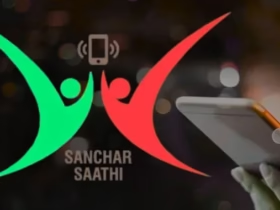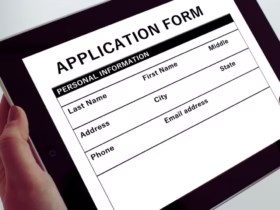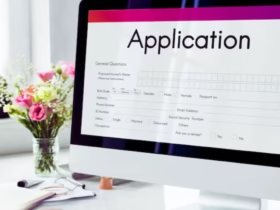When you’ve submitted a job application, it’s easy to feel anxious about waiting for a response. After spending countless hours perfecting your resume and cover letter, it’s natural to wonder whether your application will stand out. At this point, you may feel like your work is done, but following up is an important next step. Following up on a job application shows your initiative, enthusiasm, and genuine interest in the position. It also demonstrates your professionalism and desire to move forward in the process. However, it’s crucial to strike the right balance between being persistent and respectful to avoid coming off as pushy. A well-timed follow-up email can make all the difference in keeping you on the hiring manager’s radar.
I will cover the best strategies for following up on your job application. This includes tips on how to write the perfect follow-up email, the best time to follow up, and how to handle different responses, ensuring you navigate this critical step with confidence.
The Significance of Following Up on a Job Application

Following up on a job application is not just about reminding the employer of your existence—it’s about demonstrating your enthusiasm and professionalism. A well-timed follow-up can set you apart from other candidates and show that you are serious about the job. It also helps reinforce your interest in the position and keeps you at the top of mind with the hiring manager. Additionally, following up shows you are proactive and committed, qualities that employers highly value.
By taking this step, you can differentiate yourself from others who may not take the initiative to follow up. A respectful follow-up can leave a positive impression and show your genuine desire to be part of the company. It can also encourage the employer to take another look at your application if they are undecided.
Reinforces Your Interest in the Position
A follow-up is a great way to reinforce your interest in the job. After submitting your application, you may worry that it gets lost among other candidates, especially if there are many applicants. Following up keeps you top of mind with the hiring manager, reminding them of your qualifications and enthusiasm. It shows that you are not just applying passively but are actively interested in contributing to the company.
Shows Proactive Behavior
One of the most important things employers look for in candidates is proactivity. Following up on your application demonstrates that you are willing to take the extra step in your job search. It shows that you understand the importance of following through and taking initiative, both of which are qualities that employers highly value. Being proactive can set you apart from candidates who do not take the time to follow up.
Increases Your Visibility
In a pool of applicants, it’s easy to get lost in the shuffle. Following up can increase your visibility and help you remain top-of-mind for the hiring manager. Your follow-up serves as a gentle reminder of your application, ensuring that you are not forgotten. It’s an effective way to differentiate yourself and showcase that you’re serious about the opportunity, helping you stand out amidst the competition.
Demonstrates Your Organizational Skills
Sending a follow-up email shows that you are organized and able to manage your job search efficiently. It signals that you can prioritize tasks, track deadlines, and take necessary actions. Employers appreciate candidates who are detail-oriented and capable of managing their time effectively. A follow-up email helps reinforce these qualities and demonstrates your professionalism.
Leaves a Positive Impression
A well-crafted follow-up can leave a lasting positive impression on the hiring manager. When you follow up politely and professionally, it shows that you are respectful of their time and serious about your application. This thoughtful gesture can help build rapport with the hiring manager, giving you an edge over others who may not have taken the initiative to follow up.
Provides an Opportunity for Reconsideration
Following up also provides the opportunity to be reconsidered if the employer was undecided or overlooked your application. Your follow-up may prompt the hiring manager to take a closer look at your qualifications. Even if the position has already been filled, your follow-up could leave the door open for future opportunities with the company. It can position you as a strong candidate to keep in mind for future job openings.
Best Time to Follow Up on Job Applications
Time is of the essence when following up on a job application. Reaching out too soon might appear impatient while waiting too long can make you seem uninterested. The optimal time for a follow-up is generally within one to three weeks after submitting your application. This window gives the employer sufficient time to review applications and make decisions. Outlining the best times to follow up and why each is ideal.
| Timeframe | When to Follow Up | Why It Works |
|---|---|---|
| 1 Week After Submission | If the job posting didn’t indicate a timeline for decision-making. | It’s a reasonable amount of time to gauge if your application has been reviewed. |
| 2 Weeks After Submission | If you haven’t received any response or confirmation. | Shows persistence without coming across as too eager. |
| 1 Month After Submission | If the job posting deadline has passed and no updates were provided. | A longer wait can give the employer time to make decisions. |
| During the Interview Process | If you’ve interviewed and are awaiting a decision. | A follow-up email can reiterate your interest and reinforce your qualifications. |
How to Write the Perfect Follow-Up Email
Writing the perfect follow-up email is essential for leaving a lasting impression on potential employers. It should be professional, polite, and to the point. Start by crafting a clear and direct subject line, such as “Follow-Up on [Job Title] Application,” to immediately grab the employer’s attention. In the opening of your email, address the hiring manager by name if possible; personalization adds a professional touch. Express gratitude by thanking the employer for considering your application and for taking the time to review your qualifications.
This small act of appreciation sets a positive tone for your message. When stating your purpose, be polite and direct—ask for an update on the hiring process, but avoid sounding demanding or impatient. Acknowledge that hiring decisions take time, and you understand that they may still be reviewing candidates. Some essential tips to craft an effective message:
Subject Line
A strong subject line grabs the employer’s attention and makes the purpose of your email clear. Use something direct like “Follow-Up on [Job Title] Application” to ensure the hiring manager knows what your message is about. Avoid vague subject lines, as they may be overlooked. Keeping it professional and specific increases the chances of your email being opened and read. A well-crafted subject line sets the tone for a professional and effective follow-up.
Introduction
Start your email by addressing the hiring manager by name, if possible. A personalized greeting makes your email feel more genuine and professional. If you don’t have a specific name, using a general greeting like “Dear Hiring Manager” is acceptable. Your introduction should be polite and to the point, briefly stating your name and the position you applied for. Keeping this section concise ensures the reader quickly understands the purpose of your email.
Express Gratitude
Show appreciation for the employer’s time and consideration. Thank them for reviewing your application and for the opportunity to apply. Expressing gratitude in your follow-up email demonstrates professionalism and respect. It also helps create a positive impression, which can make you stand out from other candidates. A sincere thank-you can go a long way in building a good rapport with the employer.
State Your Purpose
Clearly explain why you are writing the follow-up email. Politely ask for an update on the hiring process and whether any additional information is needed. Be direct but respectful in your request, keeping your tone professional. Employers appreciate candidates who show initiative, but it’s important to avoid sounding demanding. A well-worded inquiry keeps the conversation open and professional.
Reaffirm Your Interest
Take this opportunity to remind the employer why you are still interested in the role. Briefly highlight what excites you about the position and how your skills align with the job requirements. Reinforcing your enthusiasm shows that you are genuinely committed to the opportunity. This section should be concise but impactful, making it clear why you are a strong candidate.
Keep It Brief and Professional
A follow-up email should be concise and easy to read. Avoid long paragraphs or unnecessary details that might overwhelm the hiring manager. Use short, clear sentences to get your message across effectively. Employers appreciate candidates who respect their time, so keeping your email brief and to the point increases the chances of getting a response.
Closing
Make sure your email ends professionally and courteously. Once more, express gratitude to the employer for their time and thought. Mention that you look forward to hearing from them and that you are available for any further information they may need. A polite finish creates a favorable impression that lasts. Put your entire name and contact details at the end, followed by a formal closing like “Best regards” or “Sincerely.”
The Ideal Time to Check in Regarding a Job Application
Timing plays a crucial role in ensuring your follow-up email is effective. Following up too early can come across as impatient, while waiting too long may cause the employer to overlook your application. The ideal time to follow up is typically 1-2 weeks after submitting your application, giving the hiring team enough time to review resumes and shortlist candidates.
If there was an interview, follow up within 24-48 hours to show appreciation and reinforce your interest. Avoid multiple follow-ups in a short period to prevent overwhelming the hiring manager. Your follow-up should reflect professionalism and respect for the employer’s time.
Follow-Up Timing Guidelines
Time is of the essence when following up on a job application. It’s essential to strike the right balance between showing interest and respecting the employer’s process. Following up too soon may seem eager or intrusive while waiting too long could cause you to miss an opportunity. The table above outlines some of the best practices and ideal timing for follow-ups at various stages of the hiring process. By adhering to these guidelines, you can maintain professionalism and improve your chances of getting noticed.
| Period After Application | Best Follow-Up Strategy |
| 0-1 Week | Send a polite email to express interest and inquire about the next steps. |
| 1-2 Weeks | Follow up once more, expressing continued interest and asking if any decisions have been made. |
| 2-4 Weeks | If there is no response, follow up one final time to confirm whether the position is still available. |
| More Than a Month | Consider reaching out to inquire if there are any updates or if you can be considered for future roles. |
What to Do After Sending Your Follow-Up Email
After sending your follow-up email, it’s natural to feel anxious while waiting for a response. However, it’s important to stay composed and handle the situation professionally. Patience is key, as hiring decisions take time, and sending multiple follow-ups too soon may seem overly persistent. Keeping a positive mindset is also essential—enthusiasm is appreciated, but desperation can work against you. While waiting, continue applying for other jobs to keep your opportunities open and reduce stress.
Use this time to review and improve your resume and cover letter, ensuring they reflect your most recent achievements. Additionally, preparing for a potential interview can give you an edge if you receive a response. Lastly, tracking your applications helps you stay organized and ensures you follow up appropriately without duplicating efforts. Some steps to take next:
Be Patient
After sending your follow-up, it’s crucial to wait a few days before considering sending another one. Hiring processes take time, especially when the employer is reviewing numerous applications. It’s important to give the hiring team the necessary space to evaluate all candidates without feeling rushed. Repeatedly sending follow-up emails too soon can come across as impatient or pushy, which might negatively impact your application. Patience shows that you respect the process and value the employer’s time. Allowing time between follow-ups can help you stand out as a professional. Giving the employer breathing room demonstrates trust in their timeline and decision-making process. Maintaining patience helps foster a positive and respectful relationship.
Stay Positive
Maintaining a positive attitude in your follow-up emails and messages is essential. Show enthusiasm for the role without appearing desperate or overly eager. Waiting for a response can be stressful, but remember that each job application is a learning experience. Not hearing back immediately doesn’t mean you’re not a strong candidate—it may just be due to the hiring process taking time. Keeping a professional and optimistic tone in your follow-ups leaves a good impression on employers. Confidence and positivity can set you apart from other applicants. Stay motivated and continue applying for other opportunities while you wait. A positive mindset will help you handle any outcome with grace.
Consider Your Other Options
While waiting for a response, keep applying for other job opportunities to maintain momentum in your job search. Relying on a single application can lead to disappointment if things don’t work out. Expanding your options ensures you have multiple chances to land a role that fits your skills and goals. Continuing your job search also helps reduce anxiety, as you won’t be fixated on just one employer’s decision. You may come across even better opportunities during this time. Staying proactive increases your chances of success and keeps you motivated. Always keep exploring new possibilities while waiting for responses.
Review Your Resume and Cover Letter
While waiting for a response, take the opportunity to refine your resume and cover letter. Check for any updates, such as new skills, certifications, or recent achievements that could strengthen your profile. A well-structured and tailored resume can make a big difference in attracting employers. Ensure your documents are error-free and align with industry standards. Making small improvements now can give you a competitive edge in future applications. Consider adjusting your resume based on feedback or job market trends. Staying proactive in this way increases your chances of landing the right opportunity.
Prepare for a Potential Interview
While waiting for a response, take the opportunity to prepare for a potential interview. Research the company’s mission, values, and recent developments to gain insights into their work culture. Practice answering common interview questions to improve your confidence and communication skills. Consider preparing questions to ask the interviewer which shows your genuine interest in the role. Dressing appropriately and planning logistics can also help you feel more at ease. Being well-prepared can leave a strong impression on hiring managers.
Evaluate Your Communication Style
Take a moment to assess how you’ve been interacting with potential employers. Are your follow-up emails professional, polite, and to the point? If you haven’t received a response, consider whether your tone was appropriate and if your message was clear. Avoid sounding too aggressive or impatient, as this can negatively impact your chances. If necessary, refine your approach by making your emails more engaging and tailored to the company. Effective communication can leave a positive impression and improve your chances of getting noticed.
Don’t Take Rejection Personally
If you don’t receive a response or face rejection, don’t let it discourage you. Hiring decisions depend on various factors beyond your control, such as company needs or the competition. Instead of feeling disheartened, view it as a learning experience and an opportunity to refine your approach. Stay motivated and continue improving your skills, resume, and interview techniques. Each rejection brings you closer to the right job that aligns with your qualifications and career goals. Persistence and a positive mindset will help you succeed in your job search.
Track Your Applications
Keeping a record of the jobs you’ve applied for and your follow-up actions helps you stay organized. It prevents duplicate follow-ups and ensures you maintain a structured job search. Tracking your applications allows you to assess your progress and identify any patterns in employer responses. This information can help you refine your approach, improve your follow-ups, and adjust your strategy if needed. Staying organized also ensures you don’t miss out on any opportunities while keeping your options open for better prospects.
Common Mistakes to Avoid When Following Up on a Job Application
Following up is crucial, but it’s important to do it the right way. Some common mistakes job seekers make: Sending too many emails can be seen as overly persistent and may annoy the hiring manager. Not being polite in your follow-up email can leave a bad impression, so always remain respectful and professional. A generic follow-up message makes you seem uninterested in the specific role, so tailor each email to reflect your enthusiasm for the position. Additionally, following up too soon can make you appear impatient while waiting too long might show a lack of interest.
Always proofread your follow-up for any errors, as mistakes can undermine your professionalism. A vague subject line can cause your email to be overlooked, so ensure it’s clear and concise. Lastly, consider the hiring manager’s time, and don’t pressure them with frequent follow-ups.
Sending Too Many Emails
Following up is essential, but sending too many emails can have the opposite effect of what you intend. Bombarding the employer with repeated follow-ups may come across as desperate or overly persistent. It can make the hiring manager feel overwhelmed or annoyed, potentially damaging your chances of getting hired. Instead, space out your follow-ups and stick to one or two polite emails. A well-timed follow-up shows initiative, but too many can be counterproductive.
Lack of Politeness
When following up on a job application, politeness is key. A lack of politeness in your follow-up email can come across as demanding or entitled, which is unprofessional. Remember that the hiring manager may be juggling multiple tasks and candidates, so always express an understanding of their time constraints. Use polite language, and avoid sounding impatient or critical. Respectful communication leaves a positive impression and reflects well on your character.
Not Tailoring Your Follow-Up
One of the biggest mistakes job seekers make when following up is sending a generic email. A one-size-fits-all message can seem impersonal and not reflect your genuine interest in the specific job or company. Tailor your follow-up email by referencing the position you applied for, mentioning aspects of the company you admire, or highlighting a specific detail from the interview or job description. Personalizing your email shows that you’ve put effort into your communication and are serious about the role.
Following Up Too Soon
Timing your follow-up email is crucial, and one common mistake is following up too soon. It’s essential to give the hiring manager enough time to review your application and other candidates’ materials. Sending a follow-up just a few days after applying may make you seem impatient or inconsiderate. Aim to follow up after about one to two weeks, giving the employer sufficient time to make decisions without feeling pressured.
Being Too Vague
When following up, it’s important to be clear about your intentions. A vague or overly general email can confuse the hiring manager or make your follow-up seem unprofessional. Instead of just saying, “I’m following up on my application,” be specific about the role you applied for and why you’re interested in the position. A clear and focused email is more likely to be well-received and can help push your application forward.
Forgetting to Proofread
Typos and grammatical errors in your follow-up email can give a bad impression, suggesting that you don’t pay attention to detail. Even if your resume and cover letter were perfect, a follow-up email full of mistakes could undo all your hard work. Spend some time thoroughly proofreading your email before sending it. A well-written email reflects your professionalism and shows that you care about the details.
Ignoring the Subject Line
The subject line of your follow-up email is just as important as the content. A vague or unclear subject line may cause your email to get overlooked or even sent to spam. Always make sure your subject line indicates that it’s a follow-up, such as “Follow-Up on [Job Title] Application” or “Checking in on My [Job Title] Application.” A clear subject line ensures that your email gets the attention it deserves and helps the hiring manager easily identify the purpose of your message.
Not Considering the Hiring Manager’s Time
One of the most important things to remember when following up is to respect the hiring manager’s time. While you may be eager to hear back, keep in mind that the hiring process can take time, and they may have other priorities to attend to. In your follow-up email, be sure to acknowledge their busy schedule and express appreciation for their consideration. A respectful tone shows that you are considerate of their time and reinforces your professionalism.
Wrapping Up
Following up on a job application is an essential step in the hiring process that can make you stand out. By crafting a professional, polite, and timely follow-up email, you can effectively demonstrate your genuine interest in the position. This action shows that you are proactive and serious about the role. It’s important to strike the right tone in your communication—respectful, concise, and considerate of the hiring manager’s time. Be sure to avoid being overly persistent, but stay on their radar. A well-timed follow-up can help reinforce your qualifications and enthusiasm for the job.
Timing plays a significant role, so waiting too long can cause you to miss opportunities, while following up too soon may seem impatient. Patience and persistence should go hand in hand. With the right approach, your follow-up can significantly increase your chances of landing an interview and moving forward in the hiring process. Remember, it’s all about showcasing your professionalism and commitment.
FAQs
How soon after applying should I follow up?
It’s generally a good idea to follow up 1-2 weeks after submitting your application if you haven’t heard anything. This shows you’re interested without being too pushy. However, if the job posting mentions a specific timeline, wait until that period has passed before following up. Following up too soon may give the impression that you’re impatient while waiting too long could make you seem disinterested. A timely follow-up is key to staying in the hiring manager’s mind.
What should I do if I don’t get a response to my follow-up email?
If you don’t get a response after your first follow-up, consider sending one more polite email. If there’s still no response, it might be best to move on. Don’t take it personally, as many employers may be overwhelmed with applications or still in the decision-making process. In your follow-up email, express your continued interest in the role but also remain respectful of their time and priorities. If, after two attempts, you still don’t hear back, it’s time to focus on other opportunities.
Is it okay to follow up multiple times?
It’s okay to follow up 2-3 times at reasonable intervals but avoid being overly persistent or sending follow-up emails every few days. After the first follow-up, if you don’t hear back within a week or two, you can send a second email, ensuring that it’s polite and concise. If there’s still no response, it might be best to stop following up to avoid coming across as desperate. Striking the right balance is essential for maintaining professionalism and leaving a positive impression.
Can I call to follow up instead of emailing?
It’s usually better to follow up via email, but if the job posting encourages phone inquiries, a brief, polite phone call is acceptable. Calling should be done sparingly and only when the employer specifically indicates that phone calls are welcome. If no such instruction is given, an email follow-up is a safer and more professional approach. Be sure to prepare a short and respectful script to ensure you make a good impression during a phone call.
What should I include in my follow-up email?
In your follow-up email, express your continued interest in the position, politely inquire about the hiring timeline, and thank them for their time. Start by mentioning the position you applied for and the date of your initial application. Be courteous and concise, avoiding overly long messages. You can also ask if there’s any additional information they need from you to make their decision easier. Reinforcing your enthusiasm for the role helps to strengthen your candidacy.
How do I follow up after an interview?
Within 24 to 48 hours following an interview, send a thank-you email. Reiterate your interest in the job, highlight a key moment from the interview, and express gratitude for the opportunity. This shows you are proactive and genuinely appreciate the time the interviewers took to meet with you. The email should be concise, professional, and tailored to the conversation you had during the interview. Sending a thank-you email makes you stand out and shows that you’re respectful of the interviewers’ time.
Should I follow up if the job posting says “No phone calls”?
Yes, if the posting requests no phone calls, stick to email follow-ups. It’s important to respect the employer’s preferences, as they likely have a specific process for handling inquiries. Sending a follow-up email is a professional way to express your continued interest in the position without disrupting the hiring process. Be sure your email is clear and respectful, and refrain from calling even if you’re eager to know the status of your application.









